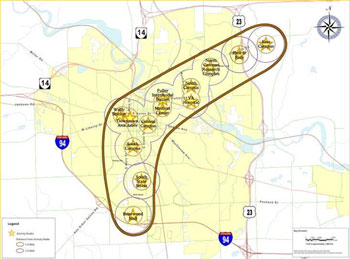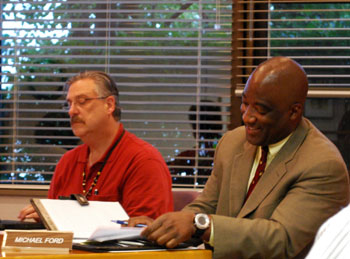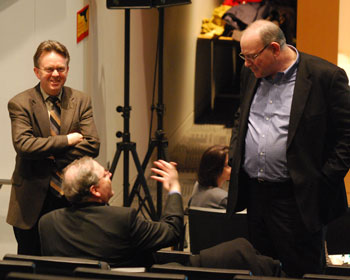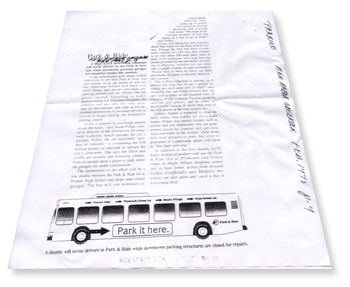
Map of the previous LINK connector service in downtown Ann Arbor
Downtown Development Authority board meeting (June 3, 2009): The start to Wednesday’s DDA board meeting paralleled the beginning of its recent retreat two weeks ago – the board met in closed session with their legal counsel to discuss pending litigation over the Fifth Avenue underground parking garage. Board chair Jennifer Hall recused herself from the session, as she had at the retreat’s closed session.
Later in the meeting, she removed herself from the DDA’s “mutually beneficial” committee, appointing board member Russ Collins to take her place. More on that after the jump.
In other board business, the theme of the balance between university and city funding responsibilities was reflected in board consideration of two transportation-related issues: (i) a feasibility study for a north-south connector service along the Plymouth-State Street corridor, and (ii) the LINK circulator buses – familiar to some downtown visitors as simply “the purple buses.” The board approved an $80,000 contribution for the north-south connector, but did not renew the grant – last year around $70,000 – that funds the LINK. The LINK is ordinarily suspended during summer months, but the lack of DDA grant renewal likely means that in the fall the purple buses will re-appear only on their eastern UM loop.
Further, a $12,000 evaluation of the getDowntown program was approved, budget amendments were made to reflect allocations already approved, and a resolution was passed approving final recommendations to city council for the A2D2 rezoning package. The board also heard updates on the DDA’s website and data policy, the Fifth & Division streetscape improvements project, the underground parking garage, and the valet parking service. The valet service has been suspended for the summer after the pilot showed less-than-successful results through the first five months of the year. [Full Story]








